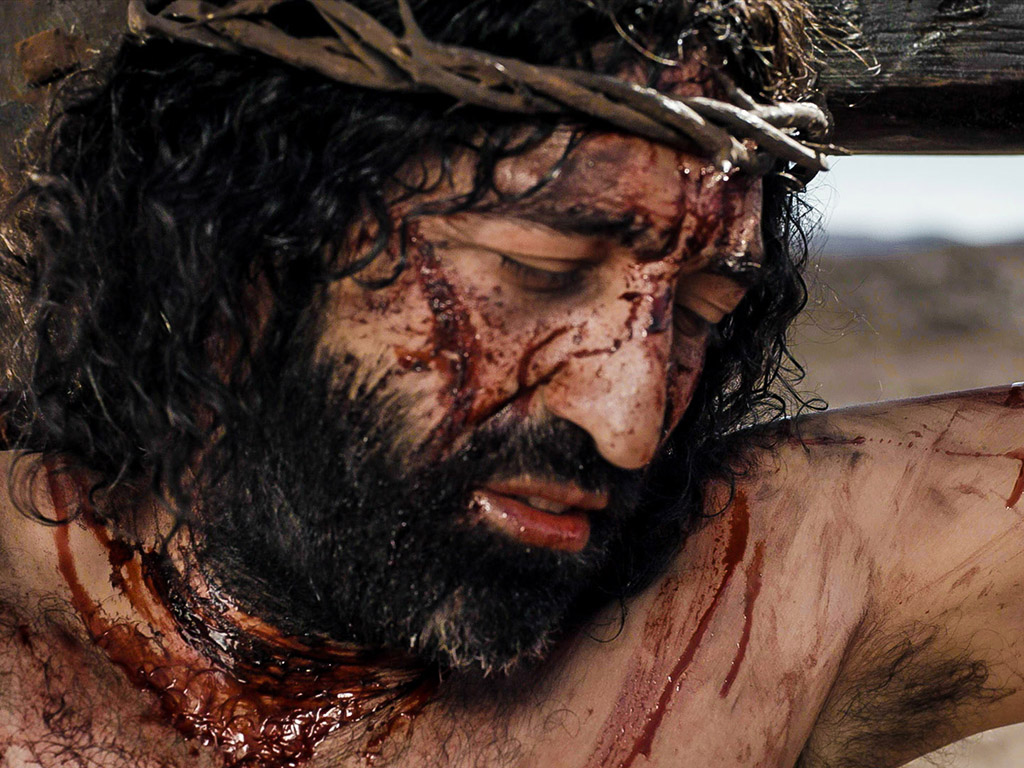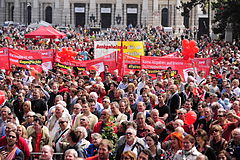“The crowds were appalled on seeing him –
so disfigured did he look that he seemed no longer human –
… without beauty, without majesty,
No looks to attract our eyes…
A man to make people screen their faces. »
This is what Isaiah tells us in the 1st reading of today celebration
(Good Friday, Year B: Is.52:13 – 53:12).
This is the picture we are presented with today:
Someone who no longer appears to be a human being
and who certainly does not appear… to be God.
Someone people prefer not to see, someone they choose to ignore, to move away from.
What if, for the word ‘people’, we substitute the words ‘we’, ‘us’?…
Isaiah did and this is what we read:
“We took no account of him…
We thought of him as someone punished, struck by God…”
No striking feature, except that of suffering.
No attractive trait, except that of suffering.
No appealing expression except that of suffering.
A veil covering the recognition of what appears before the onlookers, confronting them.
Yet, it is a misconception to think that Good Friday is the glorification of suffering.
Some well-intentioned preachers may say that Jesus suffered more than anyone else.
We are not asked to believe this.
The martyrs of the early Christian era,
the victims of Stalin of Russia,
of Hitler of Germany,
of Mao Tsé-Tung of China,
of Pol Pot of Cambodia,
of Idi Amin in Uganda,
and closer to us, of the so-called Islamic State torturers, to name but a few –
all of them have undergone unimaginable suffering.
 Good Friday is not the glorification of suffering, it is the exaltation of love –
Good Friday is not the glorification of suffering, it is the exaltation of love –
the love of God made man,
though he no longer looked like either…
A love that made him to be “pierced through for our faults, crushed for our sins.”
Indeed, “through his wounds we are healed.”
This Friday is indeed good if it enables us to understand what, some time before this day of ultimate suffering, Jesus has revealed to Nicodemus:
“Yes, God loved the world so much that he gave his only Son,
so that everyone who believes in him may not be lost, but may have eternal life.
For God sent his Son into the world not to condemn the world,
But so that through him the world might be saved.” (Jn.3:16-17)
Note: Another reflection is available in French on a different theme at: https://image-i-nations.com/vendredi-saint-annee-b/
 The eight-hour movement to reduce the working day from 10 to eight hours began after the Civil War. It was a major aim of the National Labor Union, whose first congress met in 1866. By 1868 congress and six states passed an eight-hour legislation. In 1884 the National Federation of Organized Trades and Labor Assemblies decided to call for a general strike on May 1, 1886, to enforce demands for employers to observe the eight-hour day. In 1947, amidst the anti-Communist Cold War hysteria, the US Veterans of Foreign Wars renamed May 1 as « Loyalty Day » and a joint session of Congress later made the pronouncement official.
The eight-hour movement to reduce the working day from 10 to eight hours began after the Civil War. It was a major aim of the National Labor Union, whose first congress met in 1866. By 1868 congress and six states passed an eight-hour legislation. In 1884 the National Federation of Organized Trades and Labor Assemblies decided to call for a general strike on May 1, 1886, to enforce demands for employers to observe the eight-hour day. In 1947, amidst the anti-Communist Cold War hysteria, the US Veterans of Foreign Wars renamed May 1 as « Loyalty Day » and a joint session of Congress later made the pronouncement official.